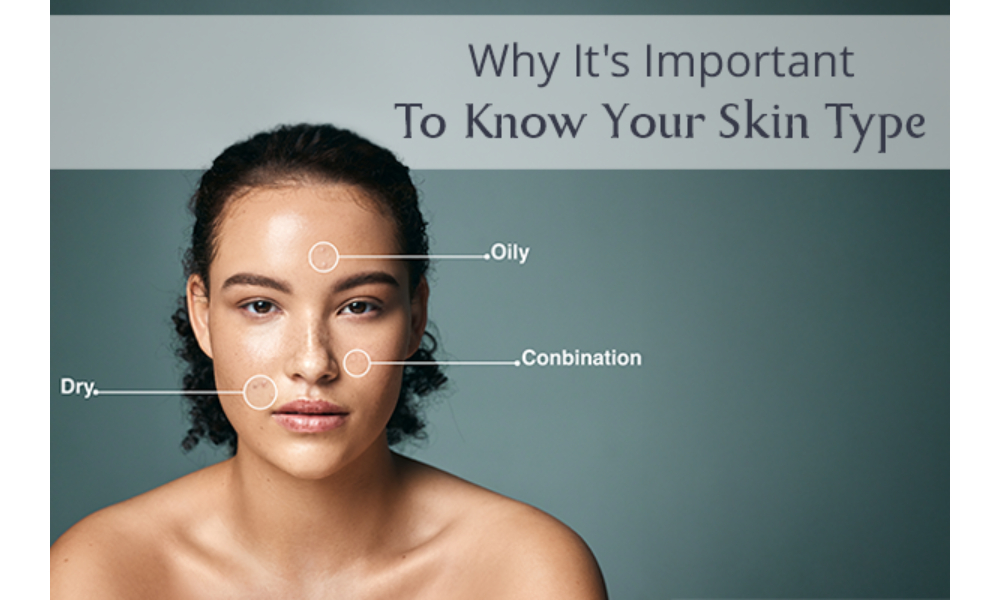When it comes to skincare, one of the most important things to know is your skin type. Many people spend money on creams, cleansers, and treatments—only to find they don’t work well or cause more problems. Often, this happens because the product doesn’t suit their skin type.
Everyone’s skin is different. By understanding your skin type, you can choose the right products and routines that work with your skin instead of against it. You’ll also know what to avoid—like harsh ingredients that strip moisture from dry skin, or heavy creams that clog oily skin.
In this article, we’ll walk you through the main types of skin—normal, dry, oily, combination, and sensitive. We’ll also help you figure out your skin type and share simple tips to care for it every day. Whether you’re starting your skincare journey or trying to solve a skin concern, this guide is a good place to begin.
What Are The Different Types Of Skin?
Many skincare mistakes come from not understanding your skin type first.Three main skin types have been identified : dry, normal, and oily, each with its own needs. Later studies and clinical practice added combination and sensitive skin types to that list—recognizing that many people have both oily and dry zones or a skin barrier that easily reacts.
Knowing which category you fit into is a simple but powerful first step. In the next sections, we’ll explain five common skin types—normal, dry, oily, combination, and sensitive—so you can discover your skin type and how to care for it properly.
Normal Skin
Normal skin is healthy, well-balanced, and generally easy to look after. It doesn’t feel too oily or too dry and doesn’t react easily to weather or products. The skin feels soft, smooth, and firm to the touch. Pores are small and not very visible, and the skin has an even tone and a natural glow. It keeps its moisture well and doesn’t get too shiny or too flaky. People with normal skin have fewer skin problems and often just need a simple routine to keep their skin in good shape. It produces just the right amount of natural oil (sebum), which helps keep it soft and hydrated.
Dry Skin
Dry skin doesn’t make enough natural oil, which means it loses moisture easily. It often looks dull, rough, and flaky, especially around the cheeks, forehead, or nose. It can feel tight after washing and sometimes becomes itchy or irritated. Dry skin may feel thinner and less flexible to the touch. It’s also more likely to become red or sensitive. Many things can cause dry skin—cold or windy weather, ageing, not drinking enough water, or using harsh soaps. If dryness gets worse, it may lead to conditions like eczema or dermatitis. Using a gentle moisturiser every day is important to help protect the skin and keep it feeling soft and comfortable.
Oily Skin
Oily skin produces too much natural oil, making it look shiny or greasy—especially in the T-zone (forehead, nose, and chin). Pores are usually larger and more visible. This skin type is more likely to have blackheads, whiteheads, and acne, as excess oil can clog the pores. The texture may feel thick and slick to the touch. Even though oily skin can be frustrating to deal with, it has one advantage—it tends to age more slowly and shows fewer fine lines and wrinkles because it stays naturally moisturised. A proper skincare routine can help manage oil levels and keep the skin clear and balanced.
Combination Skin
If you have combination skin, some parts of your face may be oily while others are dry. Usually, the forehead, nose, and chin (called the “T-zone”) are oily, while the cheeks and around the eyes feel dry. But it can be the other way around too—if your T-zone is dry and your cheeks feel oily, that still counts as combination skin. This skin type needs a balanced routine that treats both dryness and oiliness.
Sensitive Skin
Sensitive skin gets irritated easily. You may feel burning, itching, redness, or stinging after using certain products. People with sensitive skin often have conditions like eczema, rosacea, or allergies. It’s not about whether your skin is dry or oily—you can have sensitive skin with any skin type. If your skin reacts quickly or feels uncomfortable often, it’s likely sensitive. You need to use gentle, fragrance-free products to avoid irritation.
How to Find Your Skin Type
To figure out your skin type, start by washing your face with a gentle face wash. Pat it dry with a clean towel. Look at your skin right after washing it—see how it feels and looks. Then, check again after a few hours to see if anything has changed.
- If your skin feels dry, tight, rough, or looks dull and flaky, you likely have dry skin.
- If your skin looks normal after washing but turns shiny or greasy later, especially on your nose or forehead, you probably have oily skin. Try blotting with tissue to check for oil.
- If your forehead, nose, and chin (called the T-zone) get oily, but your cheeks stay dry or normal, you have combination skin.
- If your skin looks even, smooth, and feels comfortable without dryness or oiliness, you likely have normal skin.
- If your skin stings, burns, or itches after washing, you may have sensitive skin.
Conclusion
It’s really important to know your skin type to care for it properly. Everyone’s skin is different, and what suits one person might not suit another!
Paying attention to how your skin feels right after washing and how it changes throughout the day can give you good clues. This easy measure can help you make better choices and prevent problems like dryness, acne, or redness.
So, take a few minutes to check in with your skin daily—we bet, you’ll thank us later for this!

